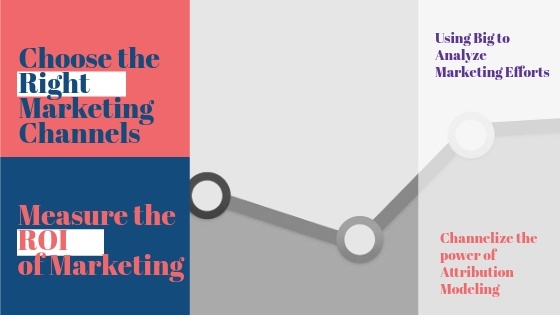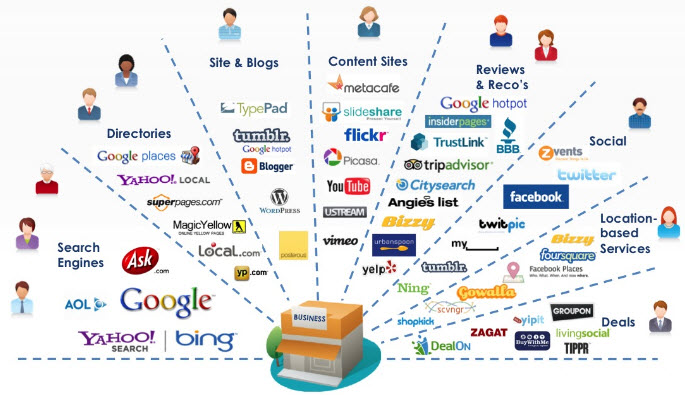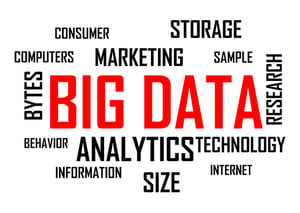Market Mix Modelling: The Science of Predicting Sales from Marketing
In the days of traditional marketing, the marketers knew how their efforts accounted for sales. But this is not the case anymore. With so many...
4 min read
Sales : Oct 2, 2017 12:00:00 AM

Attribution modeling is the method of analyzing the impact of marketing initiatives on conversions. In attribution modeling, customer's data is analyzed to estimate the role of different marketing channels in bringing revenue. Today marketers interact with prospective buyers through in many ways like Social Media (Facebook, Twitter, LinkedIn), Adwords, blogs, affiliate network, website, emails etc. When a contact finally converts it is hard to identify anyone touchpoint as the sole revenue generator.
In the days of traditional marketing, it was easy to measure the impact of marketing communication. If you printed an ad in a newspaper and saw a 20% increase in sales then you would know that it worked. Now with so many channels, it becomes necessary to use attribution modeling to measure the ROI of marketing efforts.
Read More: How to Predict Your Buyer's Next Purchase for Better Cross-selling?

Attribution modeling is important as it is the only solution to the ever asked question - did it work? It offers a solution to marketers by analyzing the impact of marketing initiatives and helping them refine their strategy. Here are few ways in which attribution modeling can be beneficial:
Read More: How to attain precision pricing with markdown optimization?
-3.jpg?width=560&name=Attribution-Modeling%20(1)-3.jpg)
The choice of attribution model can vary depending upon the type of business. If you are planning to use attribution modeling then it is good to have a rough understanding of different types of attribution models so that you can make the right choice.
First interaction gives entire importance to the first touch point that brought the contact in the company. This is an extremely faulty model because it is giving 100% importance to one channel. Except for the top of the funnel, all the remaining channels are denied recognition in bringing business to the company. With so much emphasis on funnel marketing, this method should not be chosen by any business.
Last interaction is the exact opposite of first interaction. It gives all the importance to the channel that finally resulted in converting clients. By giving 100% credit to the last channel this method neglects the work done in the top and middle of the marketing funnel. This method still makes some sense if your focus to identify only the converting channels and enhance them on priority.
In the case of last non-direct interaction, the focus is still on the last converting channel with the exception of direct visits. This attribution model ignores direct visit because it is assumed that if a person is coming directly to site than he is already aware of your services. Except for this distinction, this method also lays similar emphasis on the bottom of the marketing funnel.
In linear modeling, all the marketing channels are given equal importance irrespective of their position in the marketing funnel. This means that if the consumer went through 4 marketing communication before converting then all these four channels will be given 25% importance each. This is an effective method if you want to measure the impact of marketing as a whole. It is not very effective for measuring the efficiency of different channels individually.
In the time decay model, the touchpoint closest to the conversion is given maximum importance. Rest all the channels are allocated percentage role in conversion based on their distance from converting channel. For example, if there are 4 channels then the converting 4th channel will be allotted 40% role while 3rd, 2nd and 1st channel are allocated 30%, 20%, and 10% role respectively. This is a good model for identifying converting channels while giving due importance to secondary mediums.
In the position-based model, some positions are given more importance than others. Usually, the first channel that brings the client and the last channel that converts it are given more emphasis while the marketing channels in the middle of the funnel are given less importance. In our case of four marketing channels, the first and last channel can be given 40% importance each while the remaining 20% can be divided among the second & third channel. This is a very effective model as it is logical to give more emphasis to the channels with important roles than other mediums.

Throughout the buyer’s journey, a prospect communicates with a range of digital channels. These include organic search, display ads, impressions, social media communication etc. Awarding all the recognition to the last converting channels devalues other marketing communications. But this is not even the real problem. It is not just the different marketing channel but also the frequency, recency, and sequencing of these touchpoints that contribute to conversions. So how do analyze such huge amount of data and implement an attribution model?
This is where big data analysis comes into play. Big data analysis tools like Hadoop can bring the power of parallel processing with the capability of handling the massive amount of unstructured data. These tools also come with the ability to enrich the data in the Extract-Transform-Load (ETL) stage and create composite metrics that can better predict the business performance. By using Hadoop, attribution models can be created to quantify cause-and-effect whenever multiple activities or events occur that can influence a certain outcome.
Read More: How to use location-based marketing to personalize the buyer communication?
At NewGenApps, we have focus on creating a Digital Media Attribution Model that accounts for all the organic traffic, impressions and PPC ad clicks that occurred prior to a conversion event, and create new metrics (frequency, recency and sequencing) that can quantify the effectiveness of the different digital media activities in response to interactions with the marketing communications. With the help of this analysis, we suggest recommendations to optimize media spend across multiple marketing dimensions.
This is what we have done for some specific clients. Depending upon your business model, focus area and marketing strategy we always suggest to get a custom attribution model developed for your business. By creating a custom model you can ensure that you create and analyze data that is important to your business and not follow some trend just for the sake of it. If you are looking for business analysts who can create attribution models specific to your business model then free to contact us.

In the days of traditional marketing, the marketers knew how their efforts accounted for sales. But this is not the case anymore. With so many...

Big data analysis is a powerful tool at the disposal of marketers. With the technology advancing rapidly, it has become a powerful tool for sales and...

There was a time when pacing an outdoor banner seemed to be the most you do in marketing. Fast-forward to today marketers are analyzing every action...